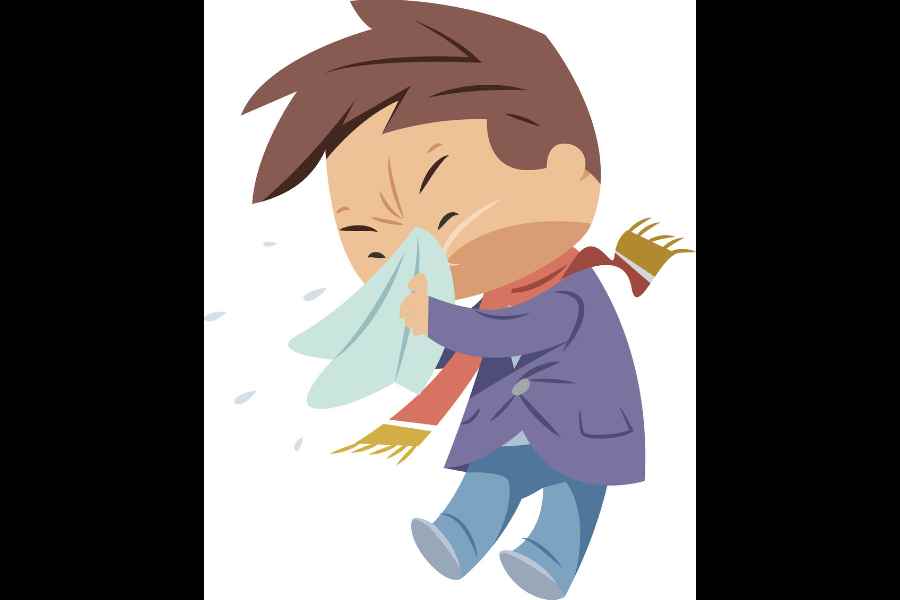Change in weather, Diwali crackers, the flu season and the monsoon have made many people sneeze. When these symptoms are accompanied by fever, people rush to hospitals and clinics seeking immediate relief, usually demanding antibiotics.
A stuffy, runny nose and sneezing can occur simply due to a drop in the outside temperature. This happens because cold air stimulates the nerves inside the nose, and it also dries the nasal passages. The body reacts by producing excess mucus. To clear this, it responds with bouts of vigorous sneezing.
Allergens in the air can also trigger sneezing and wheezing. The rains bring on an army of mosquitoes, so many people turn to vaporising repellents and burning coils, both of which can irritate sensitive noses. Cold, damp weather encourages mould to grow indoors. When cleaning slips, dust mites happily settle into mattresses and curtains, setting off yet more allergic reactions.
Pets in the house can also trigger bouts of sneezing and wheezing. Cats and dogs shed tiny flakes of dead skin, called dander, which can easily become airborne. Even birds, though kept in cages, release fine dust from their feathers and skin.
Some people suffer from a stuffy or blocked nose throughout the year. It isn’t triggered by any obvious allergens in the air but can be worsened by hot, spicy food, smoking, alcohol or certain medications such as aspirin, NSAIDs (non-steroidal anti-inflammatory drugs) and beta-blockers used for hypertension. Acid reflux can aggravate it further.
Usually, a respiratory infection is viral and can last up to seven days. The nasal discharge is clear and even the mucus that is coughed up tends to be thick but colourless. The illness should be taken seriously if the temperature rises above 100.4°F (check with a thermometer), if there is blood in the sputum, or if the discharge turns yellow or green. Remember, antibiotics work only against bacterial infections. Even then, the correct dosage and duration are essential. Don’t self-medicate with a few leftover tablets just to suppress the symptoms.
If allergens — whether in the air or in food — cause a watery nose and sneezing, you may sometimes be able to identify the triggers. Otherwise, allergy testing can help confirm the cause. Once identified, treatment can include desensitisation therapy to reduce your body’s reaction to that specific allergen.
A stuffy nose can be managed by using a steroid nasal spray on a regular basis. In an upright or seated position, each nostril should be sprayed with the nozzle angled slightly towards the ear. Several brands are available. The steroid acts locally; it isn’t absorbed into the body and helps reduce inflammation in the nasal passages.
Saline nasal drops can help wash away mucus and allergens, though they do not relieve inflammation. They can be used every few hours. Sprays containing compounds such as oxymetazoline work quickly to open up a blocked nose but they should never be used for more than a few days. Prolonged use can damage the nasal lining and lead to rebound congestion, exacerbating the problem.
The writer has a family practice at Vellore and is the author of Staying Healthy in Modern India. If you have any question on health issues, please write to yourhealthgm@yahoo.co.in











